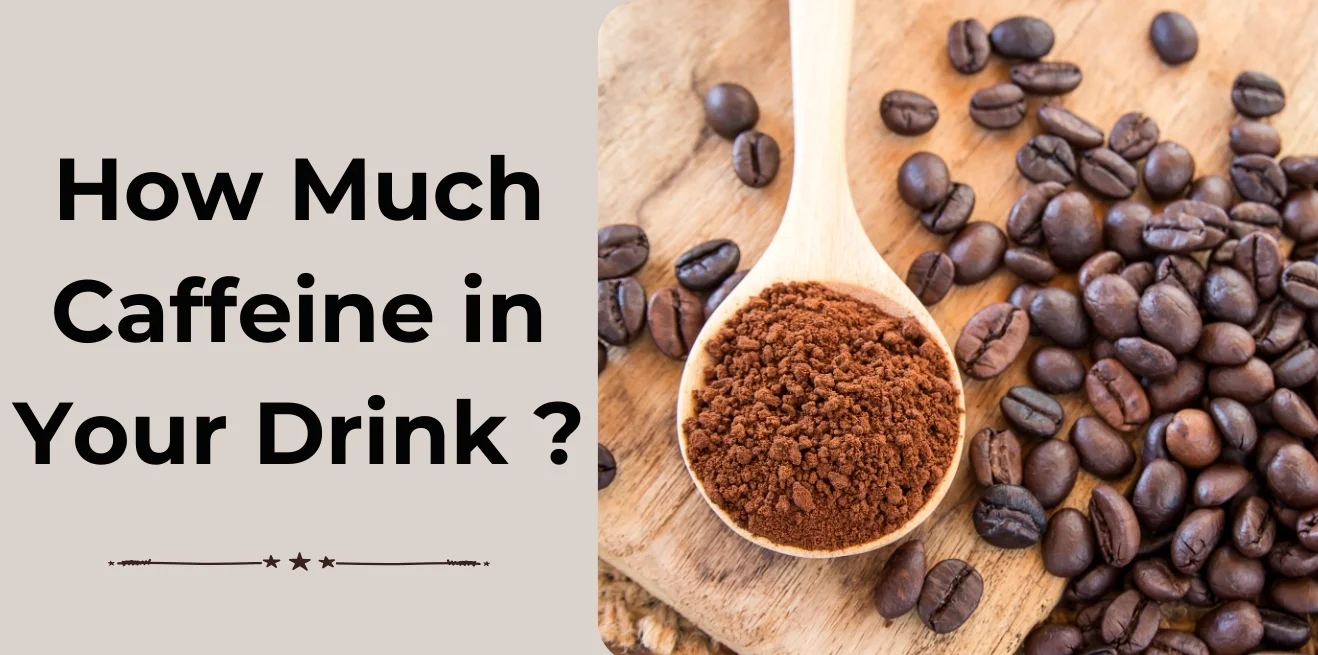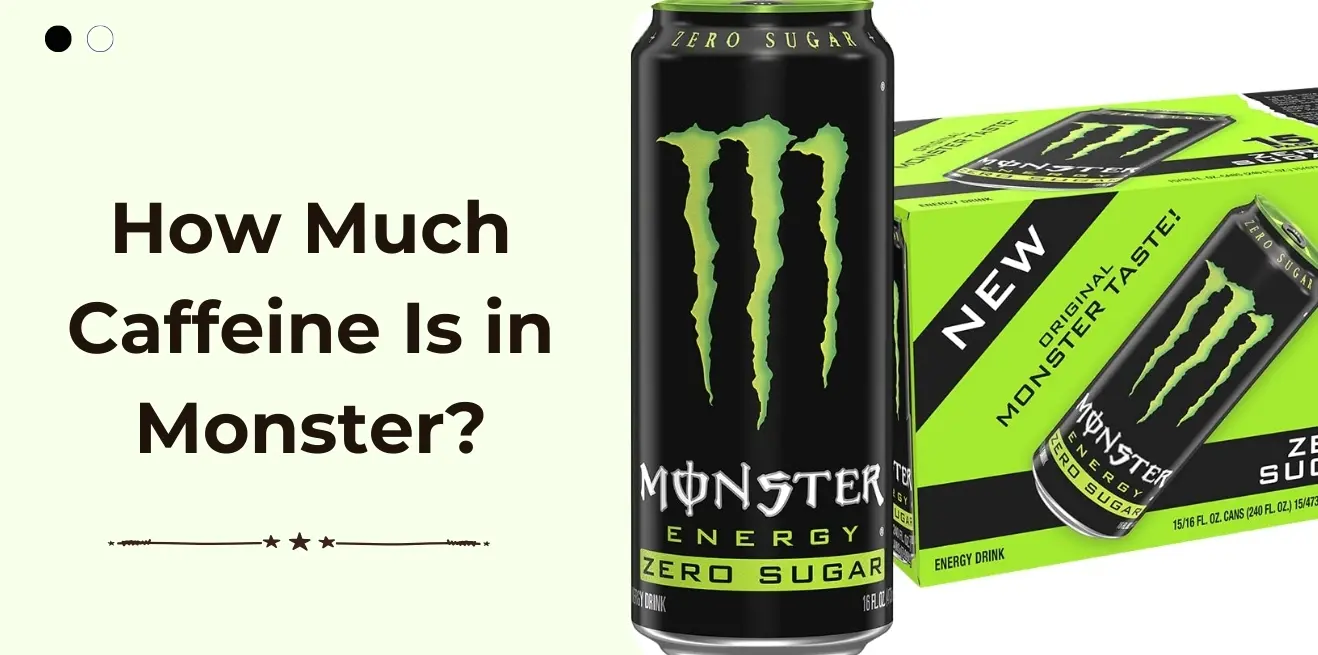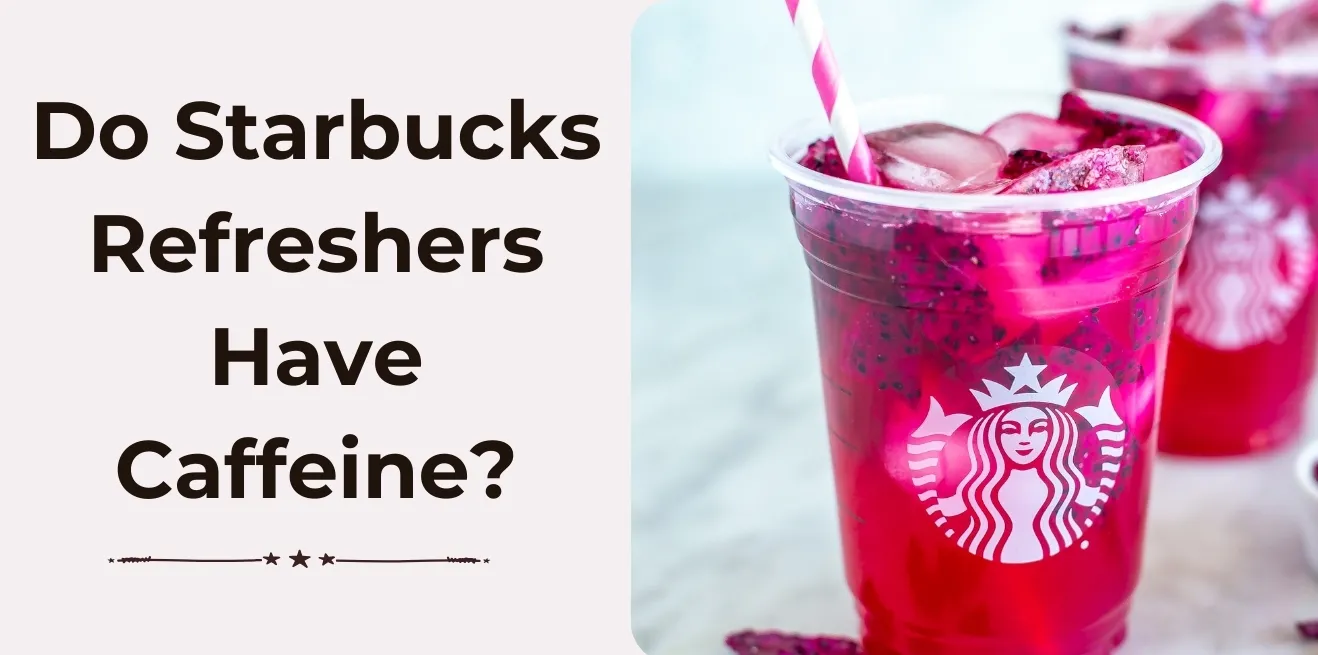🥤 What Are Energy Drinks?
Energy drinks are beverages made to boost energy⚡, alertness🧠, and focus🎯. They usually contain caffeine, sugar, vitamins, and other ingredients like taurine or guarana. Many people choose them when they need a quick burst of energy during the day.
🕰️ A Quick Look at Their History
Energy drinks became popular in the 1990s and early 2000s. Red Bull, originally inspired by a Thai energy tonic called Krating Daeng, was introduced in Austria in 1987 and quickly spread worldwide.
After that, other companies released their own drinks, like Monster, Rockstar, and Bang. Over time, energy drinks became common for students, workers, and athletes.
🥤 How Are They Different from Soda or Coffee?
Energy drinks are not the same as soda or coffee:
- Soda usually has less caffeine and is made for taste, not energy.
- Coffee has caffeine, but it doesn’t include other energy ingredients like taurine or B vitamins.
- Energy drinks are designed to give a strong and fast energy boost, often with more caffeine than a regular cup of coffee.
💪 Why Do People Drink Them? People drink energy drinks for different reasons:
- 🏃♂️ Sports: Some athletes use them before workouts or games for an extra push.
- 📚 Studying: Students use them to stay awake and focused, especially during tests or late-night homework.
- 🌙 Night Work or Driving: Workers and drivers may drink them to stay alert during long or late shifts.
⚠️ What About Teenagers?
Some teens like energy drinks because of the taste and cool packaging. But health experts warn that too much caffeine isn’t safe for teens. It can affect sleep, heart rate❤️, and concentration. Teens should be careful and know what’s in the drink before having one.
🧪 What’s in an Energy Drink?
Energy drinks are packed with ingredients that are meant to increase energy, boost focus, and improve performance. But not all energy drinks are the same. Some of the most common ingredients include caffeine, sugar, B vitamins, taurine, guarana, and artificial sweeteners. Each one plays a different role in how the drink works in your body.
☕ Caffeine
Caffeine is the main ingredient in most energy drinks. It is a stimulant, which means it speeds up the messages between your brain and body. This can help you feel more awake, focused, and alert.
There are two kinds of caffeine found in energy drinks:
- Natural caffeine comes from plants like coffee beans, tea leaves, or guarana berries.
- Synthetic caffeine is made in labs but works the same way in the body.
Some brands use one type, and some use both. The amount of caffeine also changes from drink to drink. For example, Monster and Red Bull have different caffeine levels. That’s why it’s important to check the label and know how much you’re getting.
📌 Too much caffeine can cause:
- Jitters 😬
- Fast heartbeat ❤️
- Trouble sleeping 🌙
🍬 Sugar
Sugar gives energy drinks their sweet taste and also adds to the energy boost. When you drink a sugary energy drink, your body gets a quick burst of energy. But after that, it often leads to a crash, where you feel tired and sluggish.
There are different types of sugar in energy drinks:
- Natural sugar comes from sources like fruit juice.
- High fructose corn syrup is cheaper and common in many drinks, but it has been linked to health issues when overused.
Many energy drinks also have sugar-free versions. These use sweeteners instead of sugar to keep the taste without the calories. Some sugar-free drinks still give you a strong energy boost without the crash. These are good choices for people watching their sugar intake.
💊 B Vitamins
Most energy drinks contain several B vitamins, especially B3 (niacin), B6, and B12. These vitamins are important for your body because they help it turn food into energy. This process is called metabolism.
When your body is working hard, like during exercise or when you’re very focused on schoolwork, it uses up more energy. B vitamins support the systems that keep your brain working and your muscles moving. That’s why they are added to many energy drinks — to help your body stay energized and fight off tiredness.
- Vitamin B3 (Niacin) improves blood flow and supports skin health. In large amounts, it can make your face feel warm or flushed.
- Vitamin B6 helps the brain develop and keeps the nervous system working properly. It also plays a role in how your body uses protein.
- Vitamin B12 supports the making of red blood cells, which carry oxygen through your body. If you don’t get enough B12, you may feel weak or tired.
Most energy drinks have more than the daily recommended amount of these vitamins. While they’re not usually dangerous in high doses, taking too much over time may cause side effects in some people. So, while these drinks can help for short-term focus, it’s best not to rely on them every day for your vitamin needs.
🧠 Taurine
Taurine is an amino acid that your body makes naturally. It helps with many important jobs, like keeping your heart healthy, helping your muscles work, and supporting brain function.
In energy drinks, taurine is added because it may help improve mental performance and physical endurance. Some studies suggest that taurine can make you feel calmer and more focused, especially when it’s combined with caffeine. That’s why it’s often found in drinks used for studying, gaming, or sports.
Even though taurine is used in energy drinks to improve brain and body function, scientists still don’t fully understand how much it helps when taken this way. The good news is that it’s generally considered safe in small amounts, and your body can get rid of extra taurine if it doesn’t need it.
🌿 Guarana
Guarana is a plant that grows in the Amazon rainforest. Its seeds contain natural caffeine, which makes it a popular ingredient in energy drinks. In fact, guarana has more caffeine than coffee beans by weight.
Guarana is added to energy drinks because it provides a longer-lasting energy boost. It releases caffeine more slowly than coffee or soda, so some people feel more steady energy instead of a quick spike followed by a crash. Guarana may also help with mental focus, alertness, and physical endurance.
However, guarana can add extra caffeine to a drink without it being obvious. Some labels only show the total caffeine amount, not how much of it comes from guarana. If you’re not careful, you might take in more caffeine than you realize, which could lead to jitters, anxiety, or a racing heart.
So while guarana has its benefits, especially for focus and stamina, it’s important to be aware of how much caffeine you’re getting overall.
🧂 Artificial Sweeteners (in Sugar-Free Versions)
Many energy drinks now come in sugar-free versions, which use artificial or plant-based sweeteners instead of regular sugar. These sweeteners help keep the drinks tasting good without adding extra calories or causing a sugar crash.
Some of the most common sweeteners used are:
- Sucralose – This is one of the most common sweeteners in diet drinks. It’s about 600 times sweeter than sugar and has no calories.
- Acesulfame K – Often paired with other sweeteners, this helps make the flavor more balanced.
- Stevia – A natural sweetener made from plant leaves. It’s popular because it’s seen as more natural than chemical options.
These sweeteners are considered safe by health experts, especially in the small amounts found in energy drinks. However, some people say they don’t like the aftertaste, especially with stevia or sucralose. Others report mild side effects like bloating or stomach upset if they drink a lot of sugar-free drinks.
If you’re trying to cut back on sugar, these versions can be a better choice, especially for people with diabetes or anyone watching their calorie intake. And the good news is, many sugar-free energy drinks today still give the same boost as the regular ones.
☕ How Much Caffeine Is in Energy Drinks?
Caffeine is the main active ingredient in energy drinks. It’s what gives you that awake, focused feeling after you drink one. But not all energy drinks have the same amount of caffeine. In fact, the caffeine levels can vary a lot — from as low as 50 mg to as high as 350 mg per can or bottle.
The right amount of caffeine depends on your age, body size, and how much caffeine you already consume each day. The FDA recommends no more than 400 mg of caffeine per day for healthy adults. For teens and younger people, the safe limit is much lower — usually around 100 mg per day or less.
Many people think energy drinks are all the same, but some brands are much stronger than others. Here’s a simple chart showing how much caffeine is in some of the most popular drinks:
| 🏷️ Brand | 📦 Size | ⚡ Caffeine |
|---|---|---|
| Red Bull | 8.4 oz | 80 mg |
| Monster Energy | 16 oz | 160 mg |
| Bang Energy | 16 oz | 300 mg |
| Celsius | 12 oz | 200 mg |
| Reign Total Body Fuel | 16 oz | 300 mg |
| Prime Energy | 12 oz | 200 mg |
🔍 What These Numbers Mean
- Red Bull is on the lower end, with 80 mg of caffeine. That’s less than a typical cup of coffee (which has around 95 mg).
- Monster has twice the size and double the caffeine — 160 mg in a 16 oz can.
- Bang and Reign are some of the strongest energy drinks you can buy. Each has 300 mg of caffeine, which is close to the daily limit in just one can.
- Celsius and Prime Energy are in the middle range with 200 mg each. They’re still strong and may not be safe for people sensitive to caffeine.
If you’re not used to a lot of caffeine, it’s easy to get side effects from high-caffeine drinks. These may include:
- Feeling shaky or anxious 😬
- Fast heart rate ❤️
- Trouble sleeping 😴
- Upset stomach 🤢
Some drinks like Bang and Reign even include a warning that they’re not recommended for people under 18 because of the caffeine content. And drinks like Celsius may seem healthier because of their added vitamins, but they still contain a strong dose of caffeine, which can be too much if you already had coffee or soda earlier in the day.
When choosing an energy drink, it’s important to check the label carefully. Some brands list the caffeine clearly, but others don’t show the exact amount — especially if the caffeine comes from ingredients like guarana or green tea extract. That’s why understanding what’s inside the can is just as important as how it tastes.
🏆 Popular Energy Drink Brands (2025 Breakdown)
There are many energy drinks on the market today, but some brands stand out because of their taste, caffeine content, and how they are marketed. Here’s a closer look at the most popular energy drink brands in 2025 — what makes each one different, how much caffeine they have, and who they’re best for.
1. Red Bull Energy Drink
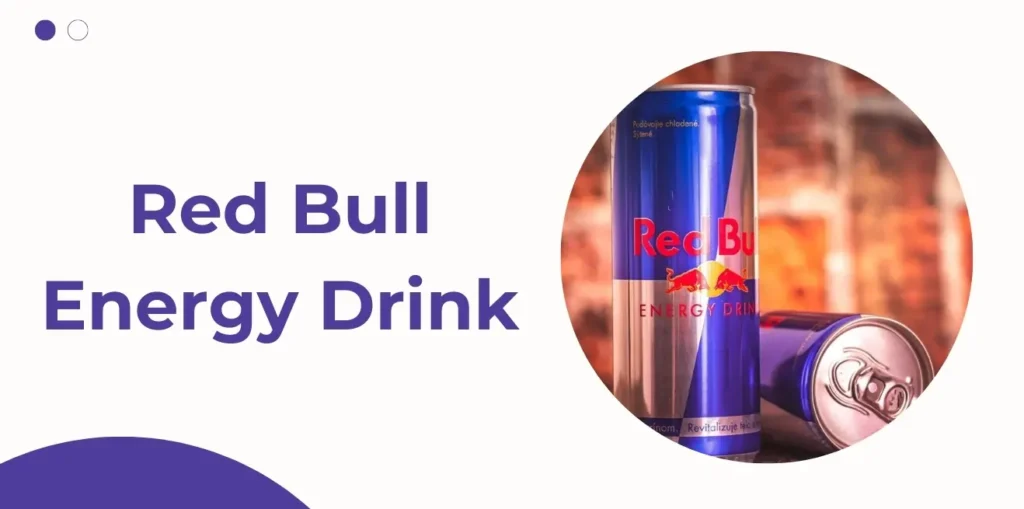
Red Bull is one of the first and most well-known energy drinks in the world. It comes in a small 8.4 oz can and has 80 mg of caffeine, which is on the lower side compared to newer brands. Red Bull is often chosen by people who want a mild energy boost without too much caffeine.
Even though it’s been around for decades, Red Bull remains popular for students, drivers, and athletes who want a quick boost that’s not too intense. It’s also easier for caffeine-sensitive people to handle compared to stronger drinks.
2. Monster Energy Drink

Monster Energy is one of the biggest competitors to Red Bull. It comes in larger cans — usually 16 oz — and contains 160 mg of caffeine. Monster is known for its wide range of flavors, including fruit, tea, coffee, and zero-sugar options.
When comparing Monster to Red Bull, the main difference is size and strength. Monster delivers twice the caffeine and is often used for longer-lasting energy, like during workouts, all-nighters, or night shifts. It’s important to be aware of how much caffeine you’re getting, especially if you drink the bigger “Mega Monster” versions, which can have even more caffeine.
3. Bang Energy Drink
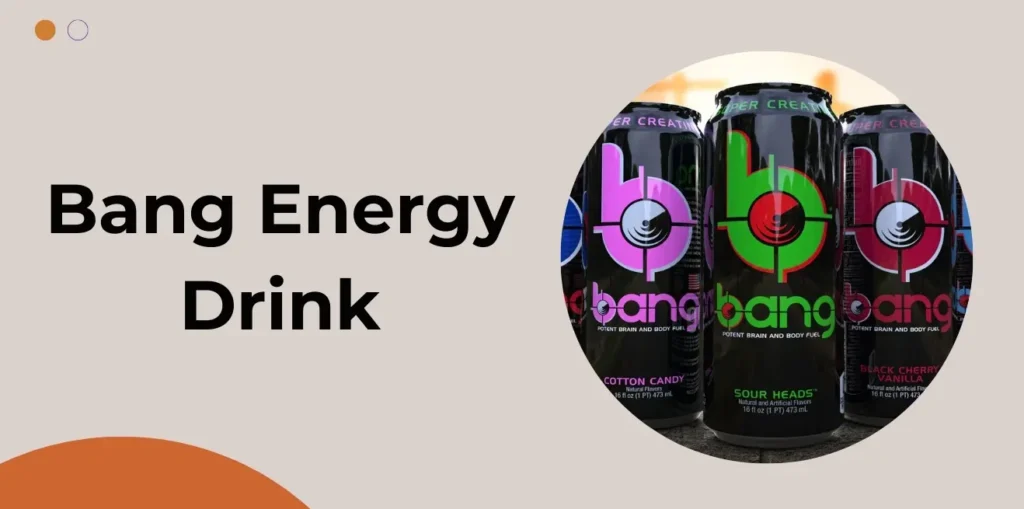
Bang is one of the strongest energy drinks available, with 300 mg of caffeine in each 16 oz can — that’s nearly the full recommended limit for the day. It’s marketed as a zero sugar drink with added amino acids and vitamins.
Many people choose Bang because they want a powerful energy rush for workouts or long study sessions. But Bang also comes with warnings. It’s not safe for teens or anyone sensitive to caffeine. Health experts say people should be very careful with drinks like Bang because the high caffeine can cause serious side effects if too much is consumed.
4. Reign Energy Drink
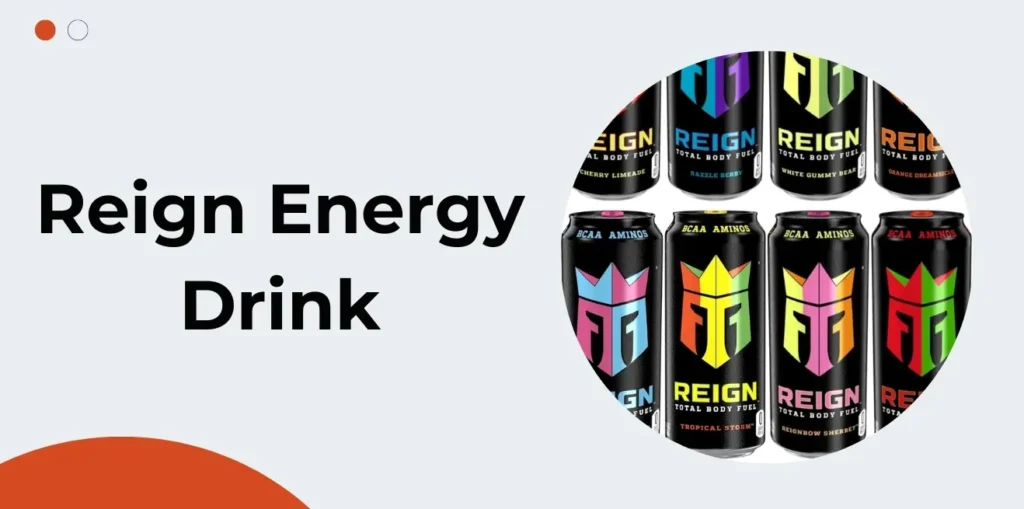
Reign Total Body Fuel is very similar to Bang. It also has 300 mg of caffeine, no sugar, and is made for fitness and performance. Some versions include electrolytes, BCAAs (amino acids), and CoQ10, which are ingredients often found in workout supplements.
Reign is often used as a pre-workout drink, and it’s popular with gym-goers and athletes. Like Bang, it’s very strong and not made for casual use or younger people. Drinking one can quickly puts you close to the daily caffeine limit, so it should be used with caution.
5. Celsius Energy Drink
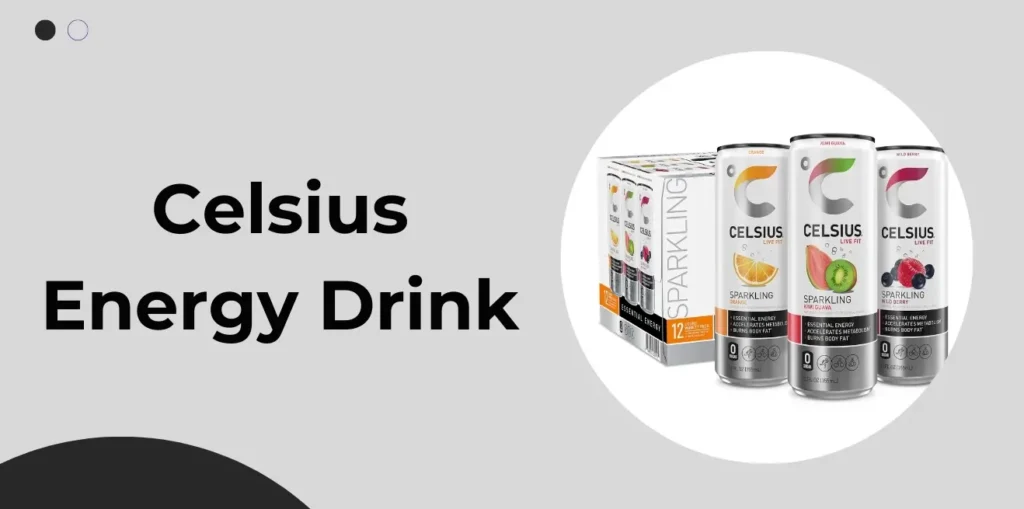
Celsius is a newer brand that markets itself as a “healthy energy” drink. It contains about 200 mg of caffeine per 12 oz can and includes green tea extract, guarana, ginger, and B vitamins.
While Celsius doesn’t have sugar or artificial preservatives, its caffeine content is still very high — more than double what’s in a Red Bull. Some people think Celsius is safer because of its clean label, but the high caffeine can still cause jitters, heart racing, or sleep problems if you’re not careful.
6. Prime Energy Drink
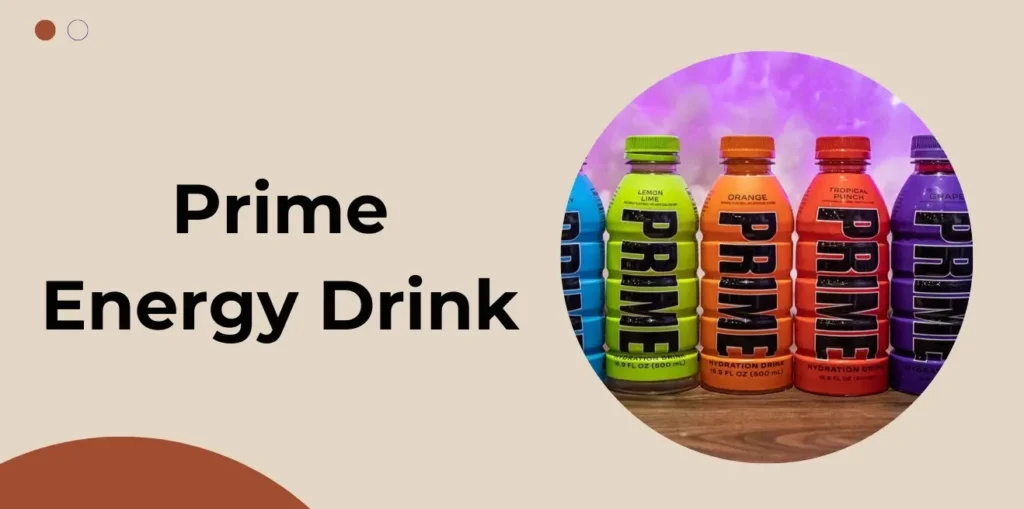
Prime Energy is backed by internet influencers and gained attention fast. It contains 200 mg of caffeine in a 12 oz can, making it one of the stronger drinks on the market.
It’s popular with teens and young adults because of its bold branding and celebrity support. But health officials have warned that Prime Energy is not safe for children due to its caffeine levels. Some schools and health groups have even asked stores to limit sales to minors.
7. Rockstar Energy Drink

Rockstar has been around for a long time and offers a wide variety of energy drinks. Most Rockstar cans are 16 oz with 160 to 300 mg of caffeine, depending on the version.
Rockstar is known for its bold flavors and “party” image, but many of its drinks are also used for focus and athletic energy. Some sugar-free options are available as well. Because some versions are very strong, it’s important to read the label and know what you’re drinking.
🆚 Energy Drinks vs Coffee vs Soda
Many people reach for a drink when they need more energy or help staying awake. The most common choices are energy drinks, coffee, and soda. All of them have caffeine, but they are not the same in how they taste, how quickly they work, or how long the effects last.
Here’s a simple chart showing the average caffeine levels in each:
| 🥤 Drink | 📏 Serving Size | ⚡ Average Caffeine |
|---|---|---|
| Red Bull | 8.4 oz | 80 mg |
| Monster | 16 oz | 160 mg |
| Bang | 16 oz | 300 mg |
| Drip Coffee | 8 oz | 95 mg |
| Coke | 12 oz | 34 mg |
☕ Coffee
Coffee is a natural source of caffeine. An 8 oz cup has about 95 mg of caffeine, but this can change depending on how strong it’s brewed. Many people like coffee because it’s a warm drink with a rich flavor and no added sugar unless you put it in yourself.
Coffee works fairly fast and can help with focus and alertness. It doesn’t usually cause a “crash” unless you drink too much or add a lot of sugar. Since most people sip coffee slowly, the caffeine is released into the body at a steady pace.
🥤 Soda
Soda, like Coke, has much less caffeine — only 34 mg in a 12 oz can. That’s not enough for a big energy boost, but it might give you a light pick-me-up if you’re feeling tired. Many sodas also have a lot of sugar, which can cause a quick spike in energy followed by a crash later on.
Sodas are carbonated, cold, and sweet, which makes them popular with young people. But they don’t really compare to coffee or energy drinks in terms of how much they help with focus or alertness.
⚡ Energy Drinks
Energy drinks are made specifically to increase energy and mental alertness. Most have more caffeine than coffee or soda, and some (like Bang) have more than triple the amount in a cup of coffee.
The caffeine in energy drinks usually kicks in fast, sometimes within 10–15 minutes. Because of the high caffeine and added ingredients like taurine and guarana, the energy boost can feel stronger. But it can also lead to a harder crash once the effects wear off — especially if the drink is full of sugar.
Sugar-free versions avoid the crash, but the high caffeine can still lead to jitters, anxiety, or trouble sleeping if you’re not careful.
🎯 Which One Is Better?
The best choice depends on what you need:
- Want a strong energy boost before a workout or exam? → Energy drink
- Need a morning wake-up without added sugar? → Coffee
- Just want a light caffeine lift with your lunch? → Soda
Each drink works differently in the body. That’s why it’s important to know how much caffeine you’re taking in — and how your body reacts to it.
You can Also Read “Energy Drinks vs Coffee: Which One Wins?”
⚠️ Are Energy Drinks Safe?
Energy drinks can help people feel more awake, focused, and energized. But they are not always safe, especially when consumed too often or in large amounts. The main concern is caffeine, which affects people differently depending on their age, health, and how much they’ve already had that day.
📏 Caffeine Limits and Safety Guidelines
The U.S. Food and Drug Administration (FDA) recommends a maximum of 400 mg of caffeine per day for healthy adults. This is equal to about:
- 4 cups of regular coffee ☕
- 2.5 cans of Monster 🟩
- Just over 1 can of Bang or Reign, which have 300 mg ⚡
Going over this limit increases the risk of side effects like:
- Jitters and restlessness 😬
- Fast or irregular heartbeat ❤️
- Trouble sleeping 😴
- Headaches or nausea 🤕
Even if a drink seems safe, the combination of high caffeine and added stimulants like guarana or taurine can make it stronger than it looks.
People who are sensitive to caffeine — or already drink coffee or soda — can feel these effects even from one can.
👉 That’s why it’s important to know how much caffeine is in your energy drink and what it might do to your body.
👦 Are Energy Drinks Safe for Teens?
Teenagers are more sensitive to caffeine than adults. Their bodies are still developing, and even small amounts of caffeine can cause:
- Trouble sleeping
- Anxiety or mood swings
- Rapid heartbeat
Many energy drinks are sold with bold packaging and flashy ads that attract young people. But drinks like Bang or Prime Energy, which contain 200–300 mg of caffeine, often include a warning: “Not for children under 18.”
Teens who drink these regularly may develop habits that affect their health, focus, and school performance. That’s why it’s important to talk about the risks and understand why energy drinks may not be safe for teenagers.
You can Also Read: Energy drinks and teens: what parents should know
🤰 Caffeine and Pregnancy
During pregnancy, the body becomes more sensitive to caffeine. Most health experts suggest staying under 200 mg per day — less than one can of many popular energy drinks.
Too much caffeine during pregnancy has been linked to:
- Low birth weight
- Sleep issues in newborns
- Higher risk of miscarriage
Also, energy drinks often contain other ingredients that may not be safe, such as herbal extracts, artificial sweeteners, and added stimulants.
For most people who are pregnant, it’s safest to avoid energy drinks completely unless approved by a doctor.
You can Also Read: Are energy drinks bad for your health?
🏋️ What About Athletes and Gym Users?
Energy drinks are popular among people who work out, especially for those who want a mental and physical boost before training. Drinks like Reign and Celsius are marketed toward fitness and performance.
They often include:
- High caffeine (200–300 mg)
- B vitamins
- Electrolytes
- Amino acids (like BCAAs)
While this mix can improve focus, strength, and endurance, too much caffeine can also cause:
- Muscle cramps
- Dehydration
- Heart palpitations
- Poor sleep (which affects recovery)
Athletes should carefully read the label, stay hydrated, and avoid mixing energy drinks with other caffeine sources or pre-workout powders.
You can Also Read: Can you drink energy drinks every day?
✅ So, Are They Safe or Not?
Energy drinks are not automatically dangerous, but they can become a problem if:
- You drink too much in one day
- You’re sensitive to caffeine
- You’re a teenager, pregnant, or an athlete relying on them too often
The key is moderation, reading labels, and understanding how your body responds. Knowing the risks can help you make smarter choices and use energy drinks safely — if at all.
You can Also Read:
- Energy drink side effects you should know
- Are energy drinks bad for you?
Benefits of Energy Drinks (When Used Responsibly)
Energy drinks can be helpful when used in moderation and for the right reasons. They are designed to provide a quick boost of energy, improve mental alertness, and support physical performance. While they’re not a replacement for rest or good nutrition, they can be useful in certain situations.
⚡ 1. Quick Energy and Alertness
One of the main reasons people drink energy drinks is to fight off tiredness. The caffeine kicks in quickly — usually within 10 to 15 minutes — and can make you feel more awake, even if you were feeling drained just moments before.
This can be especially helpful when you have a long day ahead or need to stay up late to meet a deadline. A small can of Red Bull or Monster, for example, gives enough caffeine to help you feel alert without being overwhelming — if you haven’t had other caffeine recently.
🎯 2. Improved Focus and Reaction Time
Caffeine doesn’t just make you feel more awake — it also helps your brain focus better and react faster. This is why many students, gamers, and professionals use energy drinks during study sessions, tests, or long work hours.
The combination of caffeine and ingredients like taurine and B vitamins can help sharpen your thinking and reduce mental fatigue, especially during high-stress moments. It’s important to choose a drink with the right level of caffeine for your needs — too much can hurt focus instead of helping it.
You can Also Read: Best and worst energy drinks for studying
🏋️ 3. Pre-Workout Performance Boost
Many athletes use energy drinks before a workout to help them train harder and stay motivated. Drinks like Reign, Bang, or Celsius are often marketed as “fitness fuel” because of their high caffeine content, plus added ingredients like electrolytes, BCAAs, and green tea extract.
These drinks may:
- Boost energy for high-intensity training
- Improve mental drive and focus in the gym
- Help delay fatigue during longer workouts
Still, it’s best to use them wisely. Drinking one before exercise may help, but relying on them for every session can lead to tolerance or energy crashes later on.
😊 4. Mood and Motivation Enhancement
Caffeine can also help lift your mood, especially when you’re feeling slow, unmotivated, or emotionally tired. Many people report feeling more positive or focused after having a moderate amount of caffeine. That’s one reason energy drinks are used not only for physical energy but also to improve mental drive and emotional focus.
Some drinks also include small amounts of tyrosine or adaptogens, which are ingredients that may help support stress control or brain function — though these benefits depend on the brand and formula.
✔️ Use with Purpose, Not as a Habit
While these benefits are real, they work best when energy drinks are used occasionally and intentionally — not as a daily habit or replacement for sleep and nutrition. Understanding when to use them, and how much is safe, makes a big difference.
⚠️ Common Side Effects & Warnings
While energy drinks can be helpful in the short term, they also come with risks — especially if consumed too often or in large amounts. Understanding the possible side effects can help you stay safe and make smarter choices.
😬 Jitters, Anxiety, and Restlessness
Caffeine is a stimulant, and too much of it can cause your body to feel overly active. Common signs include:
- Hands shaking
- Feeling anxious or nervous
- Having a hard time sitting still
Some people feel these symptoms even after just one strong energy drink, especially if they’re not used to caffeine. The risk is even higher if you’ve also had coffee, soda, or other sources of caffeine that day.
📉 Crash After Sugar or Caffeine Spike
Energy drinks with high sugar and caffeine often lead to a quick energy boost, followed by a sharp drop in energy levels — commonly known as a crash.
During a crash, you may feel:
- Tired
- Moody
- Foggy or unfocused
Sugar-free energy drinks may lower the chance of a crash, but they can still cause fatigue once the caffeine wears off — especially if you’re relying on energy drinks instead of real food or sleep.
You can Also Read: Energy drink side effects you should know
🌙 Sleep Problems from Late-Day Use
Caffeine stays in your system for hours. Drinking an energy drink late in the day or at night can make it hard to fall asleep, even if you feel tired. This can lead to:
- Staying up too late
- Poor-quality sleep
- Feeling groggy the next morning
Some people feel the effects of caffeine for up to 8 hours after drinking it — which means even a 4 PM energy drink can affect your sleep at night.
🚫 Never Mix with Alcohol
Mixing energy drinks with alcohol is dangerous. While caffeine can make you feel alert, it does not reduce the effects of alcohol. In fact, it may cause people to drink more because they don’t feel as drunk — even though their body is still affected by the alcohol.
This mix can lead to:
- Higher risk of dehydration
- Poor decision-making
- Dangerous heart effects
For safety, energy drinks should never be mixed with alcohol — even in social settings.
Conclusion: Should You Drink Energy Drinks?
Energy drinks can be useful for short-term focus, alertness, and performance, but they are not for everyone. They should be used occasionally, not daily — and only when you really need a boost.
👌 Who Can Benefit
- Adults who need help staying alert for a short time
- Athletes looking for pre-workout energy
- Students during exams or all-nighters (with caution)
🚫 Who Should Avoid Them
- Teens
- Pregnant people
- Anyone with heart conditions or anxiety
- People who already drink a lot of caffeine from other sources
🧠 Tips for Safe Use
- Limit to 1 energy drink per day
- Don’t mix with alcohol
- Avoid using them for sleep deprivation
- Drink water along with it to stay hydrated
- Read the label to know what you’re getting
If you regularly feel tired or unfocused, try to look at your sleep, diet, and hydration instead of depending on energy drinks every day.
You can Also Read: Can you drink energy drinks every day?
You can Also Read: Use caffeine tracking tools or apps to stay within safe limits.
Frequently Asked Questions About Energy Drinks
Q.1 Can Teens Drink Energy Drinks?
Most energy drinks are not safe for teens. Teens are more sensitive to caffeine, and many drinks have warning labels saying they’re not for anyone under 18. Drinking them too often can affect sleep, heart rate, and mental focus.
Q.2 What’s the Strongest Energy Drink?
Drinks like Bang, Reign, and C4 Energy have some of the highest caffeine levels — 300 mg per can. That’s close to the full daily caffeine limit in just one drink.
Q.3 Do Sugar-Free Energy Drinks Actually Work?
Yes, they can still provide energy. Most sugar-free energy drinks use artificial or natural sweeteners like sucralose or stevia, and the caffeine works the same way. They’re a better choice if you’re trying to avoid sugar crashes or extra calories.
Q.4 How Long Does It Take for Energy Drinks to Kick In?
Most people feel the effects of caffeine within 10 to 15 minutes. The peak effect usually happens around 30 to 60 minutes after drinking. It can stay in your system for up to 6–8 hours, depending on your body and how much caffeine you had.



